Nagoya Castle gets back its palace
| Schauwecker's Japan Travel Blog by Stefan Schauwecker, webmaster of japan-guide.com |
This blog is intended to record some of my travel activities in Japan.
| previous post |
| next post |
2013/07/10 - Nagoya Castle gets back its palace

When thinking about Japanese castles, their most representative structure, the castle tower or donjon, naturally comes to mind first. Next we may think about walls, gates, moats and turrets, but only few tourists will readily associate palace buildings with them, despite the fact that palace buildings made up an integral part of Japanese castles in the past as the residences and offices of the ruling lords.
The reason is simple: almost no palace buildings have survived the 145 years since the end of the feudal ages. Most were either destroyed in wars or natural disasters or were torn down due to anti-feudal feelings or the lack of funds to upkeep them. A rare surviving example is the Ninomaru Palace in Kyoto's Nijo Castle, but ironically that castle has been lacking a castle tower ever since it had been struck by lightening three centuries ago.
In the postwar years, many cities rebuilt their destroyed castle towers, but almost none also rebuilt the castles' palace buildings. Hikone and Kumamoto are among the exceptions. And now, Nagoya has joined them with an ambitious project to rebuild its former palace, the Honmaru Goten, using original construction materials and methods. Works started in 2009 and will continue until 2018, but a first part of the palace was opened to the public on May 29, 2013, including the entrance hall (Genkan) and main audience hall (Omote Shoin).
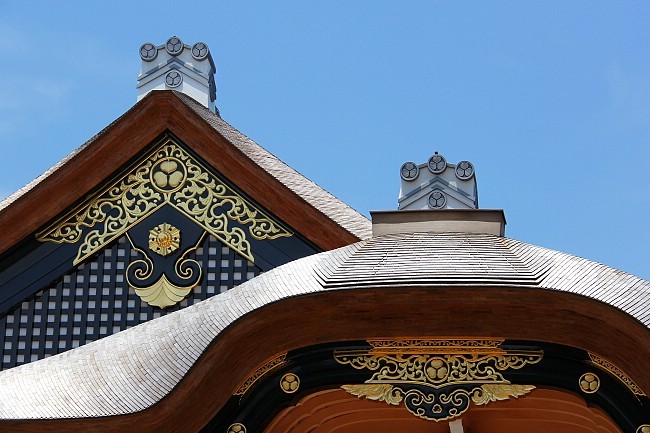
As the seat of one of the three branches of the ruling Tokugawa family, Nagoya Castle was among the country's largest castles. Until World War II, it was also one of the few castles whose palace buildings were still in existence, storing lots of invaluable pieces of art, especially paintings on its sliding doors (fusuma). While many art pieces could be rescued, the palace itself fell victim to the air raids of WW2.
The newly rebuilt palace rooms still smell of fresh wood and, unlike other historic buildings whose paintings and decorations have faded in color over the centuries, the new building conveys how the palace actually looked like at the times when it was inhabited by its lords, with fresh, bright wood, brilliant paintings and shiny metal decorations. The new palace displays replicas of the famous fusuma door paintings featuring tigers and pheasants, some originals of which continue to be exhibited in the donjon next door.
The palace is considered one of the best representatives of the Shoin architecture style which is characterized by elements such as an alcove (tokonoma), staggered shelves (chigaidana), built-in desk (tsukeshoin) and ornamented sliding doors (chodaigamae). Modern tatami rooms are still heavily based on this architecture style.

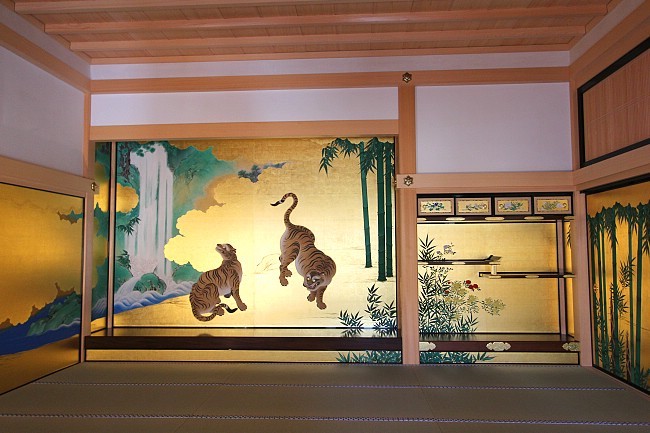


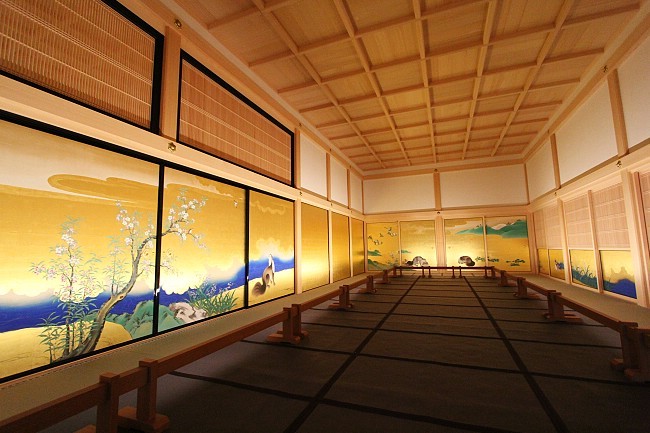

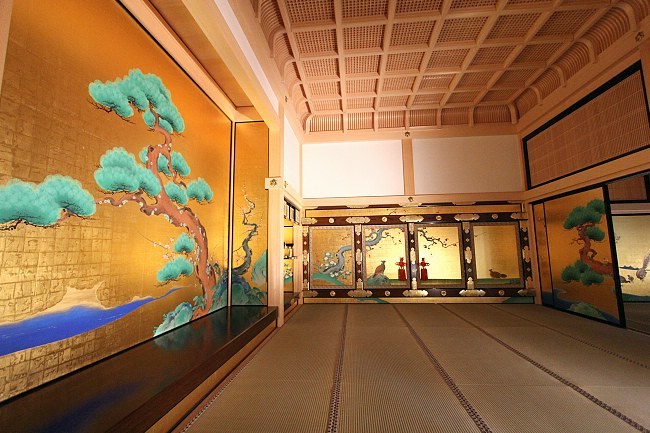
So far, only one third of the palace has been completed and opened to the public. A second section is scheduled to open in spring 2016, followed by the complete reopening in spring 2018. In the meantime, it continues to be possible for visitors to observe the reconstruction works from a raised corridor inside the scaffolding structure on Mondays, Wednesdays, Fridays, Saturdays and Sundays from 9:00 to 12:00 and 13:00 to 16:00.
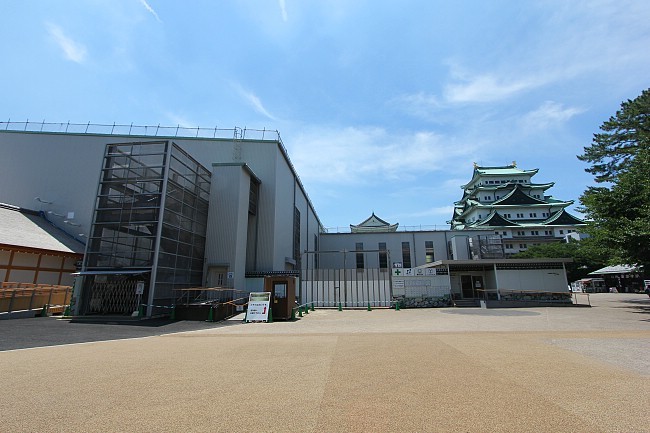
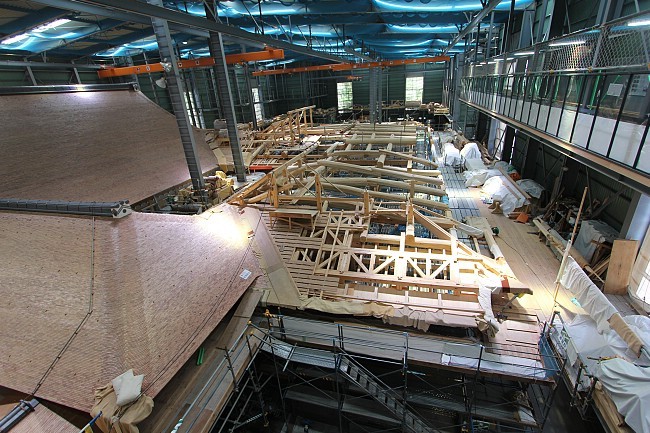
| previous post |
| next post |


